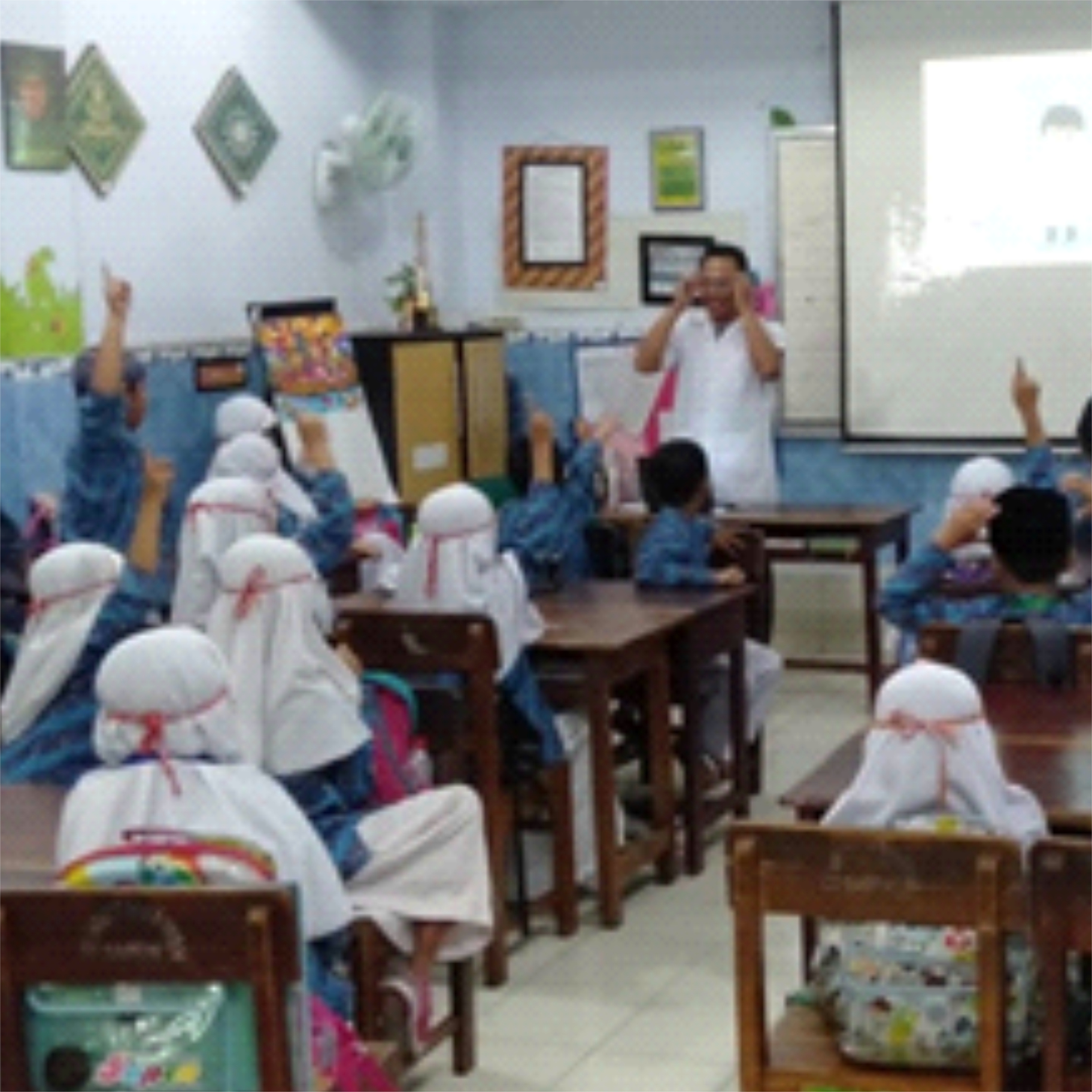Fun Chemistry for Kids: Upaya Peningkatan Minat Belajar Sains bagi Siswa Kelas 2 SD Muhammadiyah Sapen melalui Percobaan Sains Sederhana dengan menggunakan Alat Bekas Pakai dan Bahan sehari-hari
DOI:
https://doi.org/10.14421/jbs.1367Keywords:
Parent’s Day, Fun Chemistry fo Kids, Sains, KemitraanAbstract
Telah dilakukan kegiatan Parent’s Day sekaligus kegiatan pengabdian kepada masyarakat di bidang kimia bertema “Fun Chemistry for Kids” yang bertujuan untuk meningkatkan minat belajar siswa mempelajari bidang sains. Kegiatan ini dilakukan dengan cara memperkenalkan profesi ilmuwan (kimiawan) kepada siswa-siswa Kelas 2 SD Muhammmadiyah Sapen, percobaan pencampuran warna-warna primer dan percobaan meniup balon karet melalui reaksi kimia antara cuka dapur dengan soda kue. Kegiatan ini dapat meningkatkan minat belajar siswa Kelas 2 SD Muhammmadiyah Sapen dalam mempelajari bidang sains dan meningkatkan hubungan kemitraan antara guru wali kelas, sekolah dan orang tua.
[Parent’s Day activities have been carried out as well as community service activities in the field of chemistry with the theme “Fun Chemistry for Kids” which aims to increase students' interest in learning about science. This activity was carried out by introducing the profession of scientists (chemists) to Grade 2 students of Muhammmadiyah Sapen Elementary School, experiments in mixing primary colors and trying to blow rubber balloons through a chemical reaction between kitchen vinegar and baking soda. This activity can increase the learning interest of Grade 2 students at Muhammmadiyah Sapen Elementary School in studying science and improving partnership between teachers, schools and parents.]
References
Bashri, Ahmad., Faizah, Ulfi., Puspitawati, Rinie Pratiwi. 2017. Implementasi Pembelajaran Saintifik Melalui Pengembangan Perangkat Pembelajaran Guru Ipa Madrasah Ibtidaiyah Di Kecamatan Bungah Gresik. Jurnal ABDI Vol.2 No.2 Januari 2017, hal. 60–65.
Desstya, Anatri. 2014. Kedudukan dan Aplikasi Pendidikan Sains di Sekolah Dasar. Profesi Pendidikan Dasar, Vol.1, No. 2, Desember 2014: 193-200.
Djojosoediro, Wasih. 2012. Modul Hakikat IPA dan Pembelajaran IPA SD. http://pjjpgsd.unesa.ac.id/dok/1.Modul1HakikatIPAdanPembelajaranIPA.pdf. Tanggal akses 17 Agustus 2018
Istinaroh. 2017. Implementasi Integrasi Mapel Sains Dengan Agama di Kelas IV dan V SD Islam Al-Azhar 38 Bantul. Tesis. Fakultas Ilmu Tariyah dan Keguruan UIN Sunan Kalijaga.
Nurdin, Syahidan. 2013. Aspek Aplikasi Konsep Sains Dalam Evaluasi Pembelajaran IPA di MI. Jurnal Pionir, Volume 1, Nomor 1, Juli-Desember 2013
Prasetyo, Sigit. 2017. Pengembangan Media Pembelajaran IPA Berbasis Android Untuk Siswa SD/MI. JMIE: Journal of Madrasah Ibtidaiyah Education, 1(1), 2017, 121-140.
Olsen, G dan Fuller, M.L. 2007. The Benefits of Parent Involvement: What Research Has to Say. education.com
Ratunguri, Yusak. 2015. Pembelajaran Berbasis Saintifik Terhadap Sikap Berpikir Ilmiah Mahasiswa Program Studi PGSD Universitas Negeri Manado. Journal Pedagogia ISSN 2089-3833 Volume. 4, No. 1, Februari 2015.
Sulthon. 2016. Pembelajaran IPA Yang Efektif Dan Menyenangkan Bagi Siswa Madrasah Ibtidaiyah (MI). Jurnal Elementary Vol. 4 No. 1 Januari-Juni 2016.
Tresnawati, Nailah. 2018. Pembelajaran Sains Berbasis Kearifan Lokal dalam Upaya Peningkatan Konservasi Lingkungan pada Mahasiswa PGSD di Batik Tulis Ciwaringin Cirebon. Al Ibtida: Jurnal Pendidikan Guru MI (2018) Vol 5(1): 69-82.
Widayanti, Esti Yuli. 2015. Penguasaan Keterampilan Proses Sains Dasar Siswa Madrasah Ibtidaiyah (Studi Pada Madrasah Mitra STAIN Ponorogo). Kodifikasia, Volume, 9 No. 1 Tahun 2015.
Yuliawati, F., Rokhimawan, Suprihatiningrum. Pengembangan Modul Pembelajaran Sains Berbasis Integrasi Islam-Sains Untuk Peserta Didik Difabel Netra MI/SD Kelas 5 Semester 2 Materi Pokok Bumi Dan Alam Semesta. Jurnal Pendidikan IPA Indonesia JPII 2(2) (2013) 169-177.

Downloads
Additional Files
Published
How to Cite
Issue
Section
License
Authors who publish with this journal agree to the following terms:
- Authors retain copyright and grant the journal right of first publication with the work simultaneously licensed under a Creative Commons Attribution-NonCommercial-ShareAlike 4.0 International (CC BY-NC-SA 4.0) that allows others to share the work with an acknowledgement of the work's authorship and initial publication in this journal.
- Authors are able to enter into separate, additional contractual arrangements for the non-exclusive distribution of the journal's published version of the work (e.g., post it to an institutional repository or publish it in a book), with an acknowledgement of its initial publication in this journal.
- Authors are permitted and encouraged to post their work online (e.g., in institutional repositories or on their website) prior to and during the submission process, as it can lead to productive exchanges, as well as earlier and greater citation of published work.





